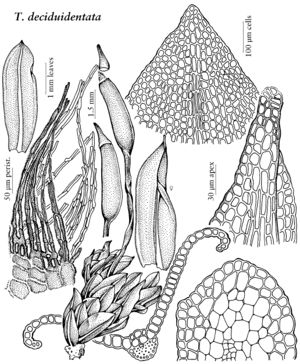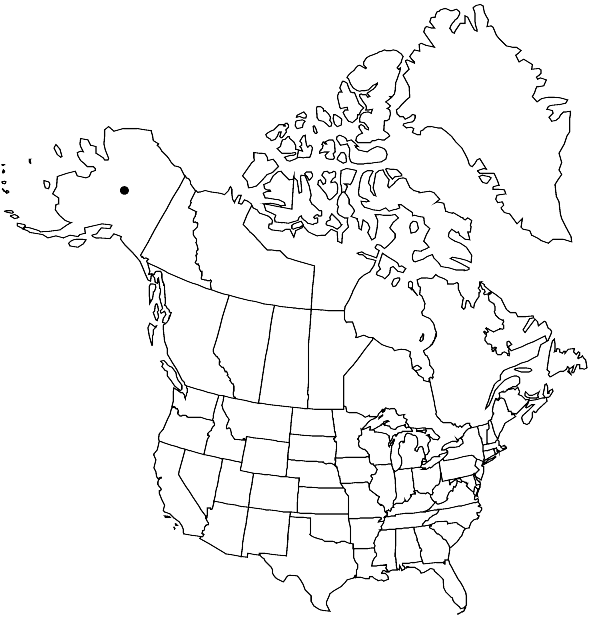Difference between revisions of "Tortula deciduidentata"
Bull. Buffalo Soc. Nat. Sci. 32: 223. 1993,.
FNA>Volume Importer |
imported>Volume Importer |
||
| (2 intermediate revisions by 2 users not shown) | |||
| Line 51: | Line 51: | ||
|publication year= | |publication year= | ||
|special status= | |special status= | ||
| − | |source xml=https:// | + | |source xml=https://bitbucket.org/aafc-mbb/fna-data-curation/src/2e0870ddd59836b60bcf96646a41e87ea5a5943a/coarse_grained_fna_xml/V27/V27_844.xml |
|subfamily=Pottiaceae subfam. Pottioideae | |subfamily=Pottiaceae subfam. Pottioideae | ||
|genus=Tortula | |genus=Tortula | ||
Latest revision as of 21:28, 5 November 2020
Leaves ovate to elliptic, occasionally lingulate, apex broadly acute, bluntly acute and muticuous or ending in a truncate or constricted mucro (in perichaetial leaves), margins revolute in proximal 1/2–2/3 of leaf, weakly bordered in distal 2/3 of leaf with 2–6 rows of thicker-walled, smaller cells; costa subpercurrent or percurrent, occasionally excurrent, lacking an adaxial pad of cells, distally narrow, 2(–3) cells across adaxial surface; distal laminal cells hexagonal to short-rectangular, width 13–18(–25) µm, 1(–2):1, smooth. Sexual condition paroicous or autoicous. Sporophytes exerted. Seta 0.6–1 cm. Capsule stegocarpic, systylius and pushing the operculum off, cylindric, erect and nearly straight, urn 2.7–3.3 mm; peristome remaining in the operculum, delicate, teeth fragmentary, of somewhat twisted filaments, basal membrane low, hyaline; operculum ca. 1 mm. Spores 15–18 µm, spheric, finely papillose.
Phenology: Capsules mature Jul.
Habitat: Moist crevices, bayside bluff, hill in wet area
Elevation: low elevations (0 m)
Discussion
Tortula deciduidentata is known only from the type locality at Moller Bay and from Seguam Island, Aleutians (Bank 966, NY, as Gymnostomum calcareum). The perichaetial leaves have an excurrent costa with a truncate apex that appears apically discolored, but no deciduous parts were seen. This rare species is similar to 1a. Tortula cuneifolia var. blissii, and is further discussed there.
Selected References
None.

